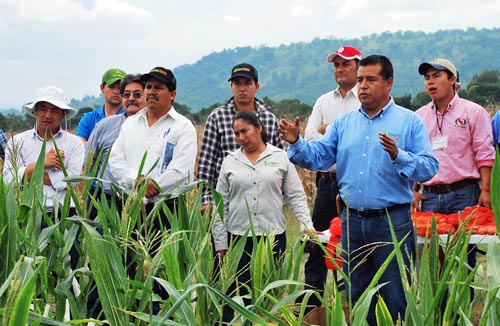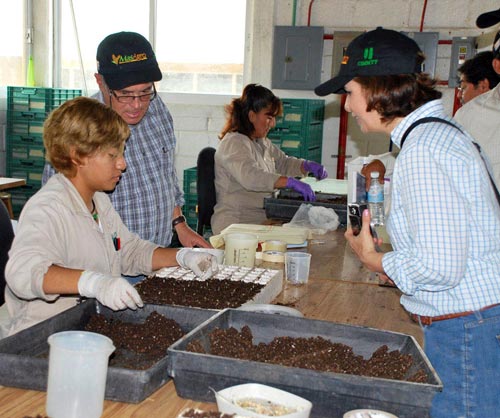 The use of doubled haploids in maize breeding was first proposed more than half a century ago and dramatically reduces the time required to produce homozygous inbred lines. Though widespread in modern maize breeding programs, the technique is little used by public programs and small- and medium-scale seed companies, especially in developing countries, partly due to its complexity.
The use of doubled haploids in maize breeding was first proposed more than half a century ago and dramatically reduces the time required to produce homozygous inbred lines. Though widespread in modern maize breeding programs, the technique is little used by public programs and small- and medium-scale seed companies, especially in developing countries, partly due to its complexity.
To gain greater knowledge and mastery of the theory and actual practice, during 26-30 November 2012, 28 maize breeders from private and public entities of 5 Latin American countries attended a course given in Spanish by CIMMYT maize experts at El Batán. Complementing a similar course given in English last August, the event covered haploid induction, chromosomal doubling, breeding using doubled haploid lines, and how to access CIMMYT’s doubled haploid line production services, including hands-on practice in identifying haploid kernels, the chromosomal doubling treatment, and assessing haploid induction rate.
 “This is a cutting-edge technology,” says Tito Clauré, Maize Program Coordinator at Bolivia’s Instituto Nacional Autónomo de Investigaciones Agropecuaria (INIAP). “We’re very happy with what we learned about double haploids, but we also attended excellent presentations on statistics, physiology, and database creation.” Clauré mentions that INIAP’s Maize Program is part of the Sustainable Modernization of Traditional Agriculture (MasAgro) project, and has received much useful germplasm from CIMMYT.
“This is a cutting-edge technology,” says Tito Clauré, Maize Program Coordinator at Bolivia’s Instituto Nacional Autónomo de Investigaciones Agropecuaria (INIAP). “We’re very happy with what we learned about double haploids, but we also attended excellent presentations on statistics, physiology, and database creation.” Clauré mentions that INIAP’s Maize Program is part of the Sustainable Modernization of Traditional Agriculture (MasAgro) project, and has received much useful germplasm from CIMMYT.
“The course was a very good experience for me,” says Victor Moran Rosas, a breeder at the seed company Semillas Berentsen in Mexico. “I’d read about (doubled haploids), but was able to practice all the steps.” Participants widely agreed that a great part of the course was being able to connect with other Latin American maize breeders.
 Capacity development
Capacity development 
